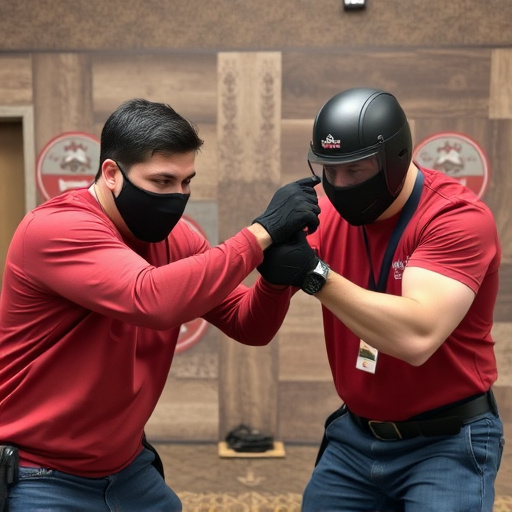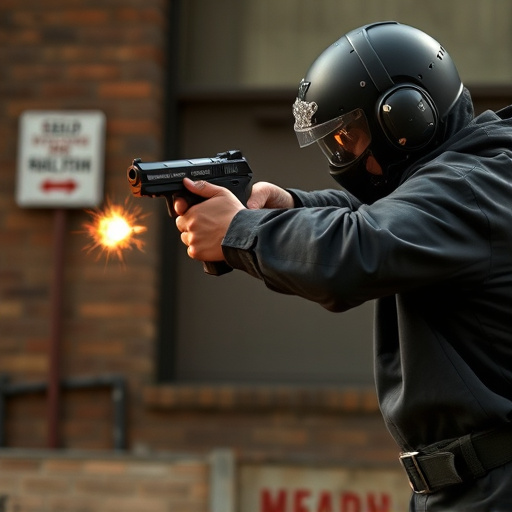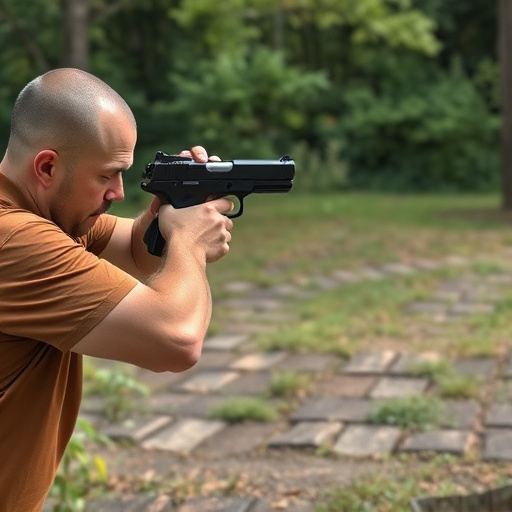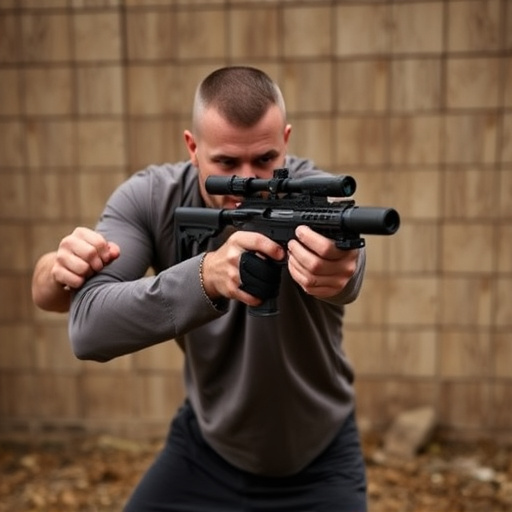Taser Paralysis Duration: Self-Defense Insights & Legal Rights
When considering affordable stun guns for self-defense, understanding Taser deployment's variab…….
When considering affordable stun guns for self-defense, understanding Taser deployment's variability is key. Paralysis duration depends on factors like model, power, target's BMI and health, probe placement, and environment. Local laws vary globally, so responsible use requires awareness to avoid legal consequences. Factors like voltage, weight, and ease of use should guide selection. Rigorous training and safe handling practices are vital to minimize injury risk during high-stress situations. Informed decision-making balances safety with legality when using affordable stun guns for self-defense.
“The impact of taser deployment and its resulting paralysis duration is a critical aspect of self-defense discussions. This article delves into the complexities surrounding these non-lethal weapons, examining the factors influencing the time individuals remain paralyzed after exposure. From understanding the effects to exploring legal rights and choosing the right stun guns, we provide an in-depth look at essential safety practices. Additionally, real-world case studies highlight the diverse outcomes, emphasizing the importance of informed decisions for personal protection, especially when considering affordable stun guns for self-defense.”
- Understanding Taser Deployment and its Effects
- Factors Influencing Paralysis Duration
- Legal Considerations and Self-Defense Rights
- Choosing the Right Stun Gun for Personal Safety
- Training and Safe Handling Practices
- Case Studies: Real-World Scenarios and Outcomes
Understanding Taser Deployment and its Effects

Taser deployment is a controversial tactic employed by law enforcement and security personnel, designed to temporarily incapacitate individuals through the use of electric shock. When activated, Tasers fire small probes that deliver a high-voltage, low-current electrical pulse, disrupting muscle control and causing immediate paralysis. This disruption can last for several seconds, offering officers time to secure or subdue an individual. However, the duration of this paralysis is not uniform; factors such as distance between the target and the Taser, body mass index (BMI), and individual health conditions can influence its length.
For those considering affordable stun guns for self-defense purposes, understanding the effects and variability in Taser deployment is crucial. While it’s intended to be a non-lethal method, prolonged or unpredictable paralysis periods could pose risks, especially in situations where individuals have underlying medical conditions. Awareness of these variables underscores the importance of educating oneself on the capabilities and limitations of such devices before making an informed decision regarding self-defense tools.
Factors Influencing Paralysis Duration

The duration of paralysis induced by a taser deployment can vary greatly, influenced by several key factors. One significant determinant is the model and power of the stun gun used; more advanced, high-voltage devices can cause longer periods of muscle incapacitation. The physical attributes of the target, including body mass and overall health, play a role as well. A larger individual might experience shorter paralysis times due to a higher tolerance threshold compared to someone smaller or with underlying medical conditions.
Another crucial aspect is the placement of the stun gun’s probes on the body. Targeting nerve clusters known as motor points can lead to extended immobility, especially in vital areas like the legs, making it harder for individuals to escape or fight back. The environment and contextual factors also matter; stressful situations or severe anxiety can shorten paralysis duration by increasing adrenaline levels, while relaxation might prolong it. For those considering affordable stun guns for self-defense, understanding these variables is essential to assess potential outcomes effectively.
Legal Considerations and Self-Defense Rights

The use of tasers by law enforcement and private citizens has sparked debates regarding the duration of paralysis it induces, especially in cases of self-defense. When an individual uses a taser as a means of protection, understanding the potential effects on an assailant is crucial for legal defenses. In many jurisdictions, the right to self-defense is a fundamental legal principle, allowing individuals to use reasonable force to protect themselves or others from imminent harm. However, the specific regulations vary widely.
For those considering affordable stun guns for self-defense, it’s essential to stay informed about local laws and the potential consequences of their actions. If used appropriately, tasers can provide a crucial window of opportunity for individuals to escape dangerous situations. Yet, prolonged or excessive use of force may lead to legal repercussions, particularly if the paralysis caused extends beyond what is considered reasonable for self-defense. Therefore, understanding the legal context surrounding taser deployment is vital for ensuring both personal safety and avoiding unintended legal issues.
Choosing the Right Stun Gun for Personal Safety

When considering a stun gun for personal safety, it’s crucial to balance effectiveness with affordability. Many quality stun guns are available at reasonable prices, making self-defense accessible to more people. These affordable options typically offer a powerful electric shock, designed to disable an attacker long enough for you to escape or seek help.
Choosing the right stun gun involves evaluating factors like voltage, weight, and ease of use. Higher voltage generally results in a stronger stun, but it’s also important to consider the range and safety features. A lightweight design ensures easy carriage, while ergonomic grips enhance comfort during use. Opting for an affordable stun gun that meets these criteria can be a wise investment in your personal safety.
Training and Safe Handling Practices

Training and safe handling practices are paramount when considering the use of affordable stun guns for self-defense. Law enforcement agencies worldwide emphasize rigorous training programs to ensure officers understand the potential risks and benefits associated with Taser deployment. These sessions cover not only the physical aspects of using a stun gun but also the legal implications, de-escalation techniques, and emergency response protocols.
Proper handling includes regular maintenance, understanding the weapon’s range and power settings, and being aware of environmental factors that might affect performance. For civilians considering self-defense with a stun gun, seeking expert advice and attending safety workshops is crucial. This ensures users can employ these devices effectively while minimizing the risk of injury to themselves and others, especially in high-stress situations.
Case Studies: Real-World Scenarios and Outcomes

In real-world scenarios, understanding the duration of paralysis from Taser deployment is crucial, especially when considering affordable stun guns for self-defense. Case studies have shown varying outcomes based on factors like model of Taser, charge level, and physical attributes of the target. One study documented a subject experiencing muscular weakness and immobilization for approximately 5 minutes after a high-voltage stun from a popular Taser model. Another incident reported a longer duration of paralysis, lasting up to 10 minutes, attributed to the use of a more powerful unit.
These real-world scenarios highlight the importance of user training and awareness. Proper handling and understanding of Tasers can ensure their effective use without prolonging unnecessary pain or discomfort for individuals involved. Moreover, considering the market’s availability of affordable stun guns, consumers should be educated on the differences in equipment to make informed decisions that prioritize safety and legality.
In conclusion, understanding the duration of paralysis from taser deployment is crucial for both law enforcement and individuals seeking affordable stun guns for self-defense. By recognizing the factors influencing paralysis, such as distance, target size, and device settings, users can make informed decisions when choosing the right stun gun. Additionally, proper training and safe handling practices are essential to ensure responsible use. Legal considerations regarding self-defense rights further highlight the importance of understanding taser deployment outcomes, especially in real-world scenarios where case studies illustrate diverse outcomes.


